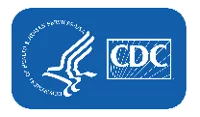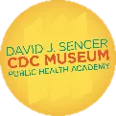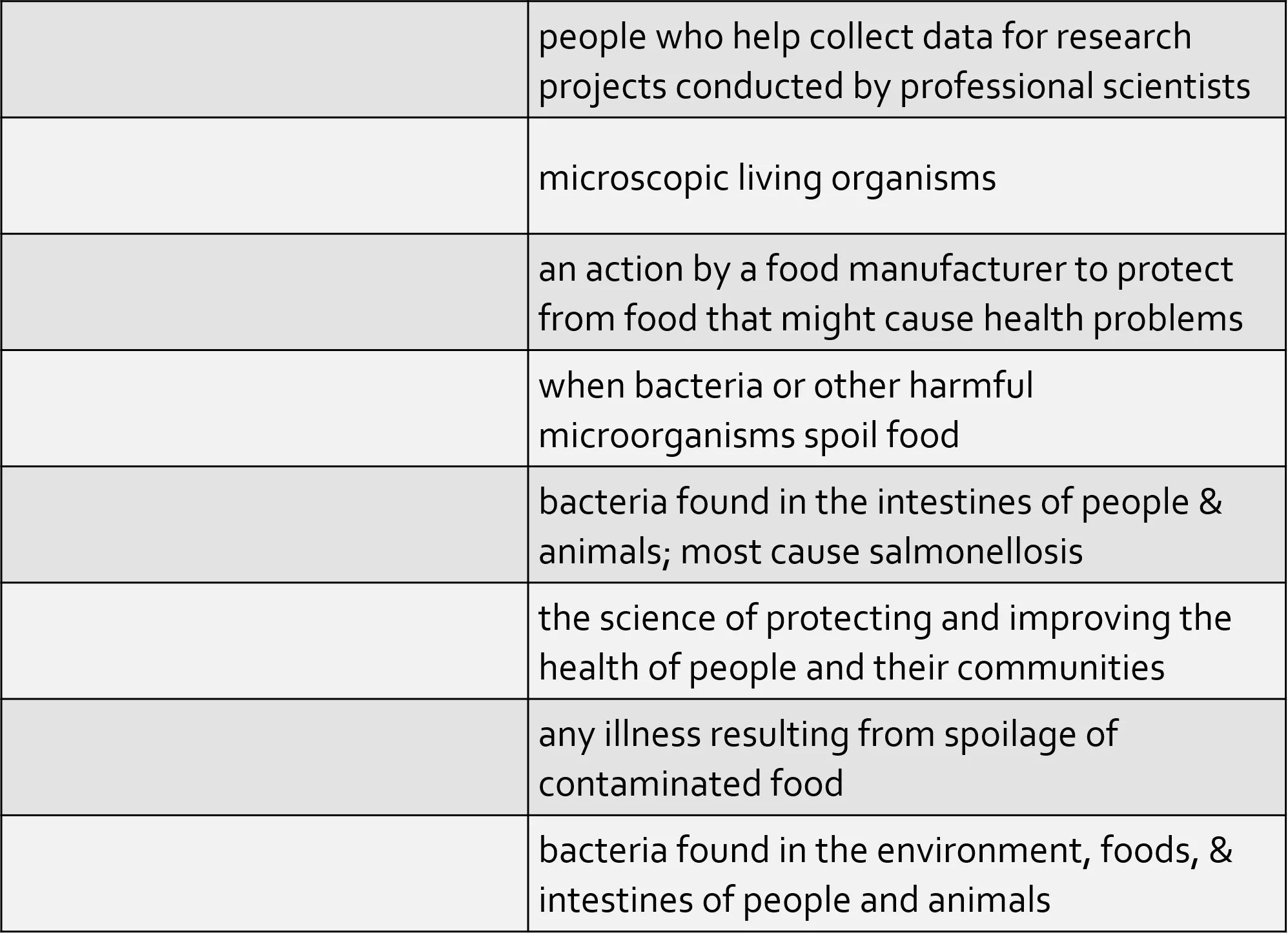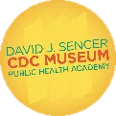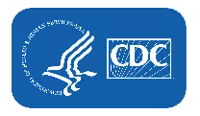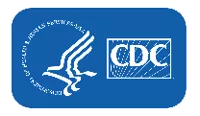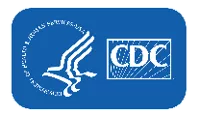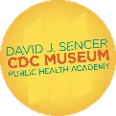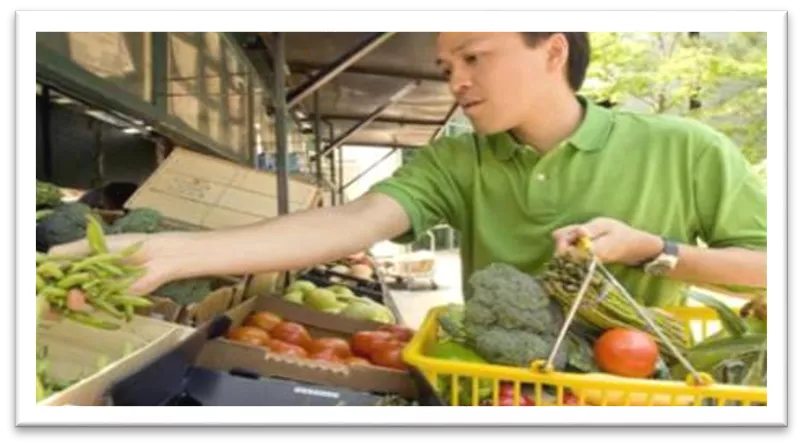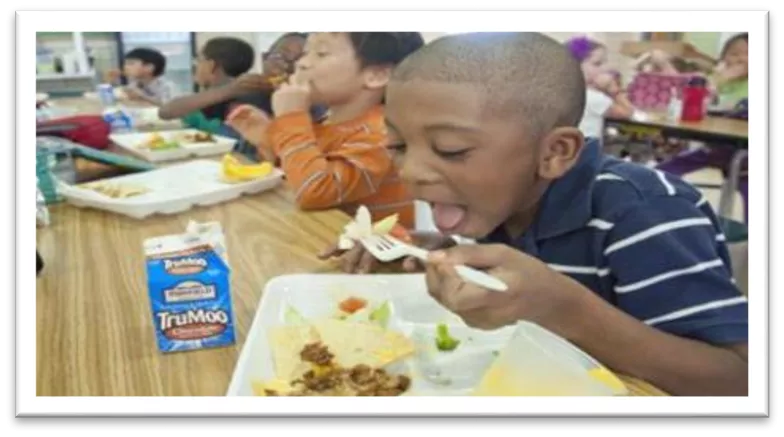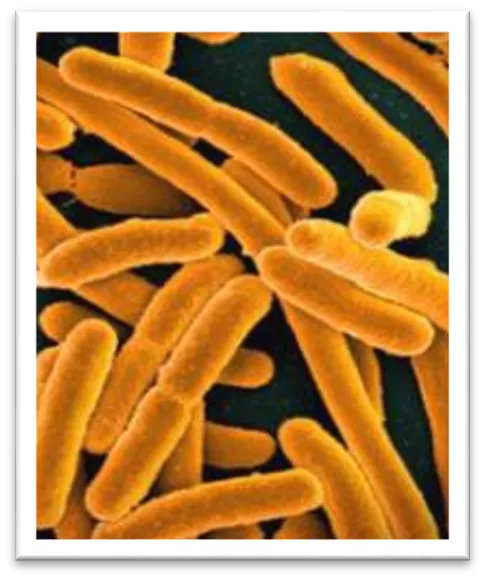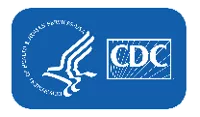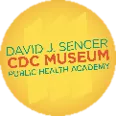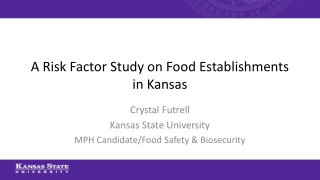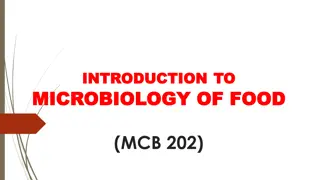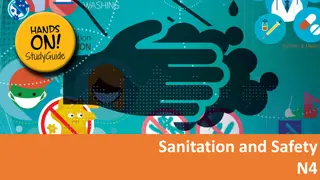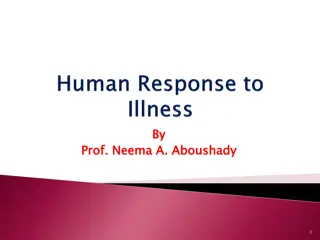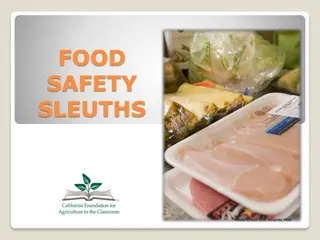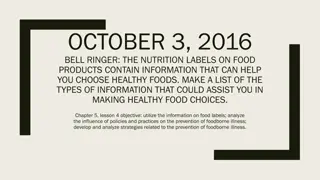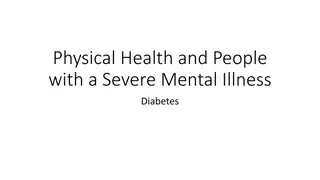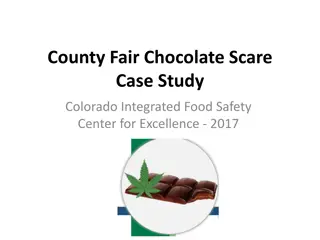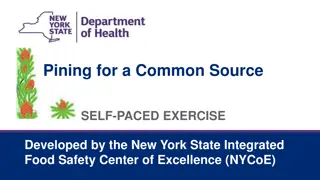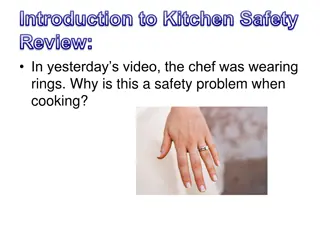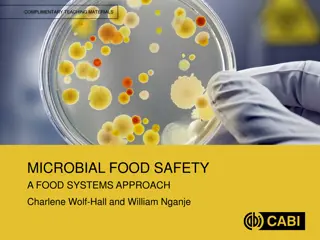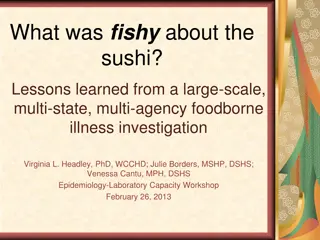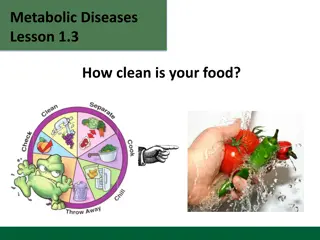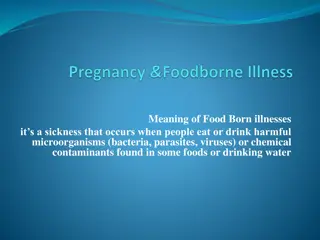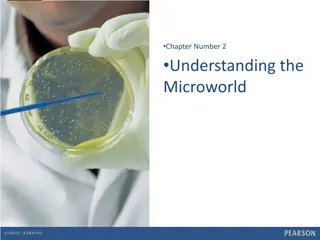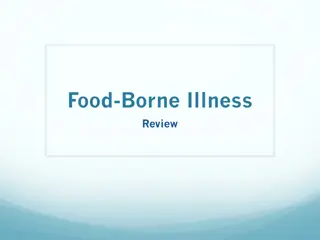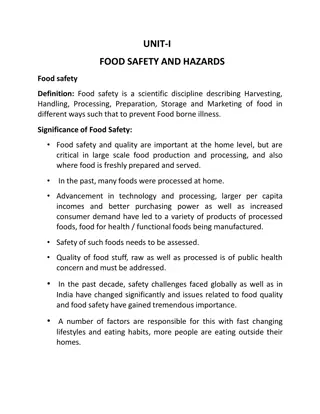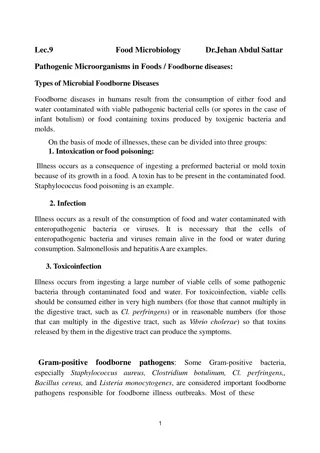Food Safety and Preventing Foodborne Illness
Exploring the importance of food safety, this content delves into common bacteria found in human intestines, food recalls, and outbreaks caused by E. coli and Salmonella. It highlights initiatives by CDC in monitoring, detecting, and preventing foodborne diseases, emphasizing the significance of surveillance systems like PulseNet and FoodNet. The content also discusses the four key steps to protect against food poisoning: clean, separate, cook, and chill.
Download Presentation

Please find below an Image/Link to download the presentation.
The content on the website is provided AS IS for your information and personal use only. It may not be sold, licensed, or shared on other websites without obtaining consent from the author. Download presentation by click this link. If you encounter any issues during the download, it is possible that the publisher has removed the file from their server.
E N D
Presentation Transcript
Keeping Food Healthy David J. Sencer CDC Museum Public Health Academy
people who help collect data for research projects conducted by professional scientists Word Bank contamination microscopic living organisms citizen scientists an action by a food manufacturer to protect from food that might cause health problems Salmonella when bacteria or other harmful microorganisms spoil food bacteria bacteria found in the intestines of people & animals; most cause salmonellosis public health the science of protecting and improving the health of people and their communities food recall foodborne illness any illness resulting from spoilage of contaminated food E. coli bacteria found in the environment, foods, & intestines of people and animals
Foodborne illness outbreaks: when two or more people get the same illness from the same contaminated food or drink Two of most common outbreaks caused by: E. coli Salmonella Understanding Foodborne Diseases
1. Are all bacteria harmful? 2. What are two bacteria that can be found in the human intestines? Think About It 3. Have you heard of any food items that were recalled?
Division of Foodborne, Waterborne, and Environmental Disease at CDC monitor surveillance systems that track + monitor reports of foodborne & waterborne diseases PulseNet: national laboratory network connects foodborne illness cases to detect outbreaks uses DNA fingerprinting of bacteria making people sick Food Safety and CDC
FoodNet: conducts surveillance for infections of nine foodborne bacterial and parasitic pathogens tracks number of cases + where cases came from, monitors changes FoodNetFAST: charts + tables of foodborne illness data Four steps to protect from food poisoning: clean, separate, cook, and chill Food Safety and CDC
1. Why would an E. coli outbreak with broccoli in California be important to residents of other states across the country? 2. What dangers could consumers experience if strict guidelines weren t in place for food handling? Think About It 3. What safety protocols have you noticed when shopping for fresh produce in your local grocery store?
From the Expert https://youtu.be/iIaKWNZhz74
1. Why should raw meat be prepared separately from fruits and vegetables? 2. Why is cooking food to the proper temperature important? Think About It 3. What do you think is the best way to convince other people to follow Clean, Separate, Cook, and Chill?
Call to Action! 1. Conduct an Experiment with Fruits & Vegetables 2. Create a Public Service Announcement (PSA) 3. Share Your Findings Give it a Try Why do you think participation is important?
Ask Ask a question Research Do background research Conduct an Experiment with Fruits and Vegetables Hypothesis Construct hypothesis Test Test with an experiment Analyze Analyze data Conclusions Draw conclusions Share Communicate results
1. Conduct an Experiment with Fruits & Vegetables - Prepare the petri dishes & cleansing solution - Prepare the fruits/vegetables - Conduct the experiment with unwashed and washed samples Give It a Try
1. Conduct an Experiment with Fruits/ Vegetables - Data collection - Disposal of your petri dishes Give it a Try
2. Create a Public Service Announcement (PSA) - Topic: Four Steps to Food Safety Give it a Try
3. Share Your Findings - Instagram @CDCmuseum Give it a Try
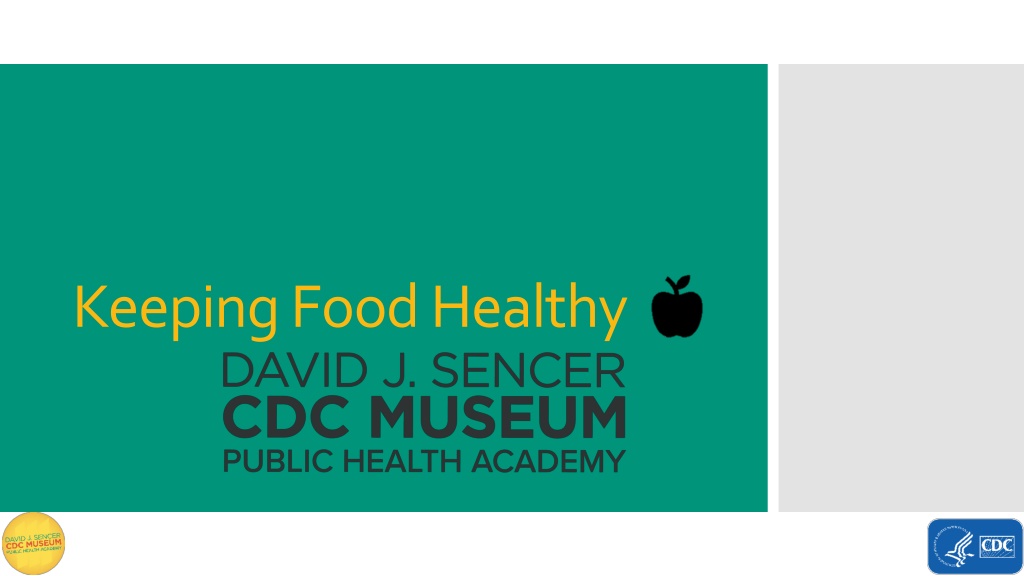
 undefined
undefined


